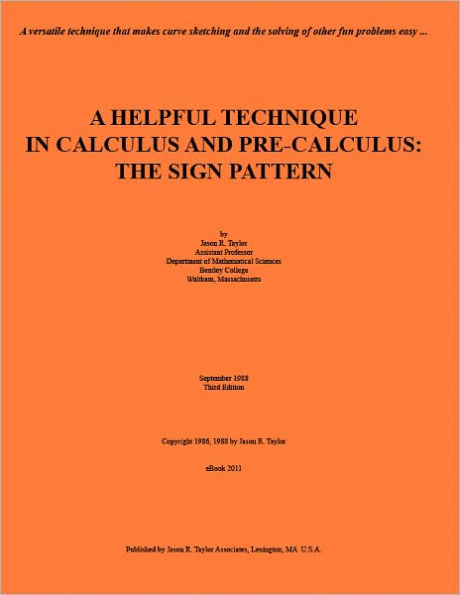The reason for creating this booklet is to fill a void I have noticed in the majority of introductory calculus and pre-calculus textbooks, over a period of many years. Most basic differential calculus courses traditionally culminate by applying the properties and interpretations of the first and second derivative to problems requiring a sketch of the curve described by the equation, y = f(x). An important part of this solution is dedicated to determining where the curve increases, decreases, is concave up, is concave down, is discontinuous and where maxima, minima and inflection points are located. In order to accomplish this task a student must calculate which values of the independent variable, x, make y’(x) and y’’(x) positive , zero, negative, undefined, imaginary or indeterminate.
This phase of the solution is generally “glossed over”, or made arithmetically difficult. The examples in most texts include a few sample arithmetic calculations to test the sign of y’ and y’’, for specific values of x. Students are then left with the challenge of choosing “appropriate” sample values of x when solving future problems. The result is a lack of confidence in applying curve sketching techniques to more general functions.
The purpose of this booklet is to introduce a technique which tremendously simplifies the task of curve sketching functions that are encountered in introductory calculus. The method is the Sign Pattern Technique. This technique is not new. However, its application to curve sketching problems is rarely described in great detail. The benefit of constructing a Sign Pattern is that it dramatically reduces the number of error-prone arithmetic calculations normally required in problem solving. This allows a user to clearly visualize an entire problem in a compact manner.
Sections 1.0 through 8.0 develop the approach using many example problems. To demonstrate the generality of the technique, Sections 9.1, 9.2 and 9.3 contain several examples describing the application of the Sign Pattern to the solution of inequalities, to the determination of the domain of square root functions and to the evaluation of infinite limits or vertical asymptotes. Section 9.4 is the major application section of this booklet. It contains a wide variety of example problems describing the application of the Sign Pattern to curve sketching.
The beauty of the Sign Pattern Technique is its wide applicability, combined with its graphic simplicity.
Hopefully, it will serve you, the student, as a valuable problem-solving tool.
Jason R. Taylor



